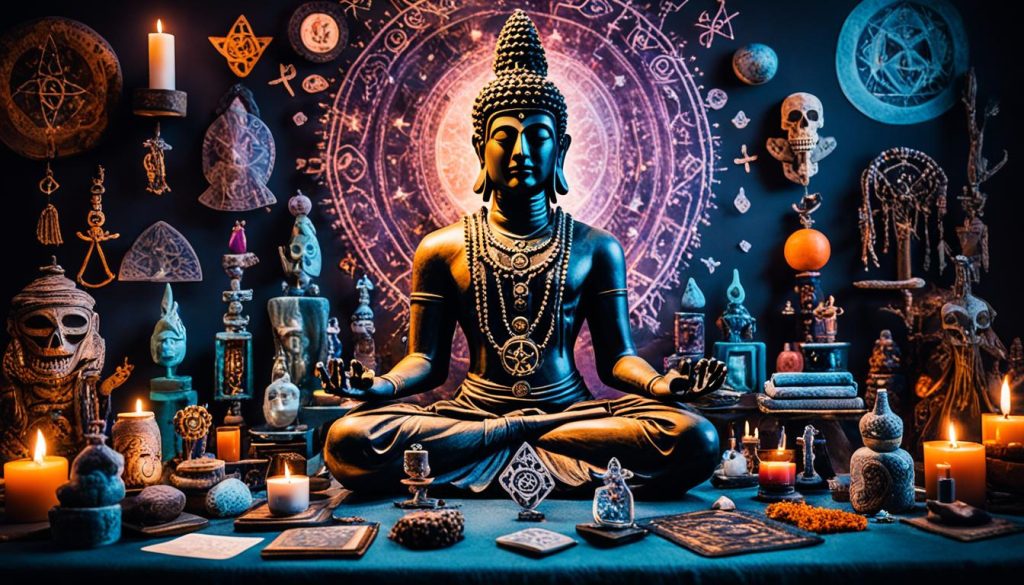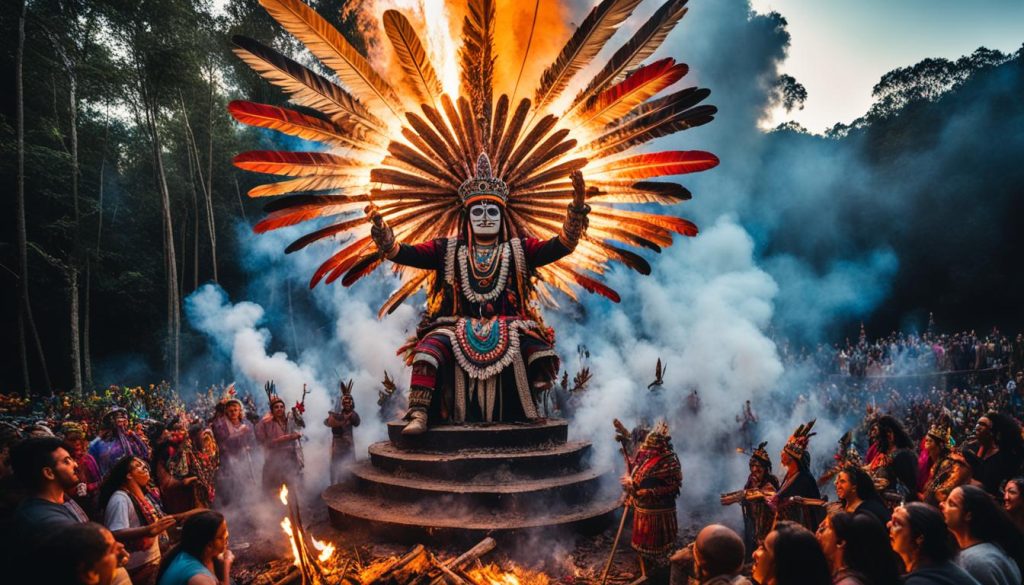Unlock the transformative power of voodoo practices and embark on a journey of spiritual growth like no other. Voodoo, with its roots in West Africa and its evolution in Haiti, holds ancient wisdom that can guide you on a path of self-discovery and enlightenment.
In this article, we will explore the cultural significance of voodoo practices and rituals, delve into the mystical elements that make voodoo ceremonies so captivating, and shed light on the key components that make each ceremony a profound experience. But first, let us understand how voodoo practices can profoundly impact your spiritual journey.
The Cultural Significance of Voodoo Practices
Voodoo practices hold deep cultural significance in Haiti, transcending mere religious beliefs to become a symbol of resistance and cultural identity. For the enslaved population, voodoo provided solace and unity, serving as a means of preserving their African heritage amidst the harsh realities of colonialism.
Voodoo rituals and practices are intertwined with the fabric of Haitian culture, encompassing ceremonies that incorporate elements such as preparation and purification, rhythmic drumming, soulful singing, energetic dancing, and awe-inspiring spirit possession. These rituals create a sacred space where individuals can establish a profound connection with the spirits, promoting a sense of community and facilitating spiritual growth.

Central to the cultural identity of Haiti, voodoo ceremonies are not just religious observances, but a vivid expression of the country’s spiritual heritage. Through rhythmic drumming and impassioned singing, participants immerse themselves in the collective energy of the ceremony, their bodies becoming vessels for the spirits to possess.
Voodoo ceremonies exude an undeniable aura of unity, bringing together individuals from diverse backgrounds and fostering a sense of belonging. They serve as a celebration of cultural heritage and an affirmation of the interconnectedness between humanity and the spiritual realm.
Exploring Voodoo Rituals and Practices
Voodoo rituals and practices encompass a rich tapestry of elements, each playing a vital role in fostering spiritual awareness and establishing a profound connection with the spirits.
Before engaging in a voodoo ceremony, participants partake in rituals designed to cleanse their bodies and minds, creating an atmosphere of purity and sanctity. This intentional preparation sets the stage for the transformative experience that awaits.
Drumming, singing, and dancing are woven into the fabric of voodoo ceremonies, generating a powerful energy that resonates with the spirits. The rhythmic beats of the drums, the resonant voices of the singers, and the fluid movements of the dancers converge to invite the spirits, facilitating their presence and guidance throughout the ceremony.
The houngan and mambo, esteemed spiritual leaders of the voodoo community, assume a unique role during these sacred gatherings. As vessels for the spirits, they serve as conduits, allowing the divine energies to manifest and communicate with the community. This practice of spirit possession not only heightens spiritual awareness but also fosters a profound connection with the divine.
Through voodoo rituals and practices, individuals are granted the opportunity to explore the depths of their spiritual being, unlocking hidden realms of consciousness and expanding their understanding of the spiritual world.
The Power of a Sacred Connection
- Preparation and purification rituals create a sacred space for voodoo ceremonies.
- Drumming, singing, and dancing generate a powerful energy that invites the presence of the spirits.
- The houngan and mambo facilitate spirit possession, allowing for a deep connection with the divine.
As participants immerse themselves in the mystique of voodoo rituals, they embark on a journey of spiritual awareness and self-discovery. The profound connection with the spirits transcends the physical realm, enabling individuals to tap into ancient wisdom and experience spiritual growth on a profound level.
Key Elements of Voodoo Ceremonies
Voodoo ceremonies incorporate several key elements that are essential to its practice. These elements include the presence of altars dedicated to specific spirits or loas, the use of veves as visual invitations for the spirits, and the guidance of spiritual leaders known as houngans and mambos. Let’s explore each of these elements in more detail.
Altars: Sacred Spaces for Connection
Altars play a crucial role in voodoo ceremonies as they serve as sacred spaces for connecting with the spiritual realm. These altars are carefully arranged and adorned with symbolic objects such as candles, flowers, and sacred artifacts. They are dedicated to specific spirits or loas, who are believed to inhabit these altars during the ceremony. Altars act as focal points for communication and provide a tangible presence for the spirits, fostering a deeper connection between the human and spiritual realms.
Veves: Inviting the Spirits
Veves are intricate symbols or sigils that hold significant meaning in voodoo ceremonies. They serve as visual invitations for the spirits to join the ceremony and channel their energy into the space. Each loa has its unique veve, representing their presence and power. These symbols are often drawn on the ground using cornmeal, flour, or other substances, creating a visual representation of the loa’s energy. The veves act as gateways for the spirits, enhancing the overall atmosphere and spiritual experience of the ceremony.
Spiritual Leaders: Guiding the Community
Houngans and mambos are highly respected spiritual leaders in voodoo ceremonies. They possess deep knowledge of the rituals, traditions, and the spiritual world. These leaders guide the community through the ceremony, ensuring that the rituals are performed correctly and facilitating the communication with the spirits. Houngans and mambos are not only spiritual leaders but also healers, using their expertise and connection with the spirits to provide guidance, remedies, and spiritual support to the community. Their presence and guidance play a vital role in maintaining the authenticity and spiritual depth of voodoo ceremonies.

Conclusion
Voodoo ceremonies in Haiti encapsulate the cultural richness and offer a profound sense of spiritual depth. Unfortunately, voodoo has often been subject to misconceptions and stereotypes perpetuated by popular culture. It is crucial to approach voodoo with respect and understanding, acknowledging its status as a recognized religion in Haiti and its focus on healing, community, and connection with the divine.
By embracing the mysteries and honoring the traditions of voodoo, we have the opportunity to celebrate the cultural diversity and abundance that our world holds. Voodoo ceremonies are a testament to the centuries-old heritage and traditions that have shaped the vibrant Haitian culture. Through increased awareness and appreciation, we can foster a deeper understanding of voodoo’s profound impact on the lives of the Haitian people.
Let us work together to dismantle the misconceptions surrounding voodoo and shed light on its cultural significance. By doing so, we can create a space that values and respects the beautiful intricacies of voodoo ceremonies, allowing the spiritual richness and depth to be truly recognized and cherished.